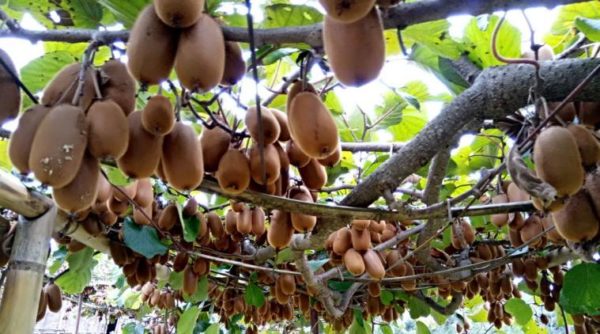For years, around forests of Arunachal Pradesh’s Ziro Valley, the kiwi would grow wild. It still does, in fact. However, it was small, tangy and rather unpalatable — and only about 20 years back, when the State’s Horticulture Department introduced a domesticated variety of the fruit, did people start consuming it.
“And yet 6,000 metric tonnes of kiwi is still imported into India every year,” says Tage Rita Takhe who resides in the Ziro Valley. Takhe, an agricultural engineering graduate, thought to herself, “Why do we need to import when it is practically growing in our backyard?”
Up till very recently, the kiwi farmers of Arunachal Pradesh were withdrawing from cultivation of the fruit and closing down their farms. In 2016, Takhe decided to invest in a boutique winery in her native village, Hong in Ziro — and just a few months ago launched Naara-Aaba, a pure kiwi wine that is made from the organic fruit sourced from her personal orchard as well as those from the Kiwi Growers Cooperative Society in Arunachal Pradesh.
Wine is traditionally made by Takhe’s tribe: the Apatani Tribe of Arunachal Pradesh. “Wine from rice, wine from millets but never wine from kiwi,” she says. Her winery, set in a 2,300 square foot space in Hong, has a workforce of 25 people. The machines there have been brought from Nashik. “The screw-capping machine is from Italy, and the bottles are from the Sichuan province in China. I don’t why many articles about Naara-Aaba suggest that this is an ‘organic winery’—can you call a printing machine organic?” she asks.
What’s organic, however, is the fruit they are cultivating — “No pesticides, no agents, nothing,” she says. The wine, too, has been given a clean certificate of composition, according to lab analyses. “We use live yeast from Denmark as a fermenting agent,” Takhe says.
Perhaps the most heartwarming bit for Takhe is that slowly the kiwi farmers of the Ziro Valley are back to their original occupation, and have a sustainable source of income. “It was just the most logical thing to do — the fruit does extremely well in this climate. The abundant sunshine of Ziro contributes to optimum growth and taste of the fruit,” she says. The barren and rolling hill slopes of the Ziro Valley are now filled with clusters of kiwi.




Leave a reply